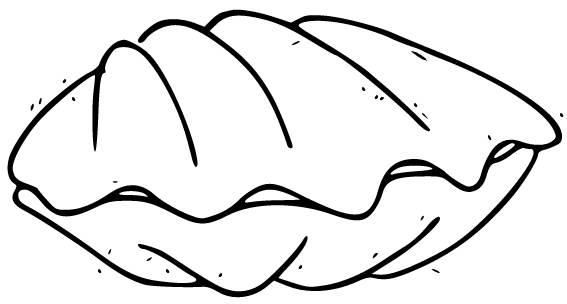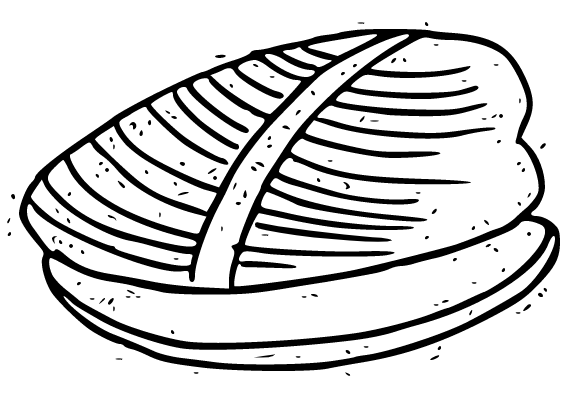-

-
The Discerning Mollusk's Guide to Arts & Ideas
-


. . . regularly through last year the Zoom-enabled Glue Factory took monthly consignment of a roving report on whatever topic—usually related to war, sharks, and literature—was top of my mind. Here’s the news from September, on some unexpected photographic connections.
Hello.
I’ve been working on early photography, learning about the methods and substances used by the Victorian pioneers.
Techniques in the 1850s included the photogenic drawing on salted paper and the calotype; the daguerreotype, on silver-plated copper; and the wet collodion process, using glass plates to make negatives.
It’s notable that many of these photographic trailblazers made much more use of stuff, of unprocessed things that we would still recognize as substances: Sir John Herschel, for example, used the acid from oak galls, a fungus growing on the trees in his stately grounds. Or eggs—at the height of photomania, and to my delight, albumen from egg whites was in such demand, for treating the photographic paper, that six million eggs a year were used in Britain, just for this. There were “girls [who] did nothing else all day but break eggs and separate the whites from the yolks,” (says curator D. B. Thomas), and it was a seasonal business: they produced more photographic paper, and more images, at the times of year when hens were laying more prolifically.
But we’ve moved on, in photography. Past the wet plates and the eggs, past silver halide, explosive nitrate, celluloid, to the digital. (Though I think the filmmaker David Cronenberg harks back to Victorian photography, preoccupied as he is with the interface between the messy, wet human body, and transmission of the image.) I’m still interested in the old stuff, however, and I’ve become fascinated by a particular substrate of images, which is: the damp or the wobbly photograph. I’m interested in there being something not quite solid in the photographic image.
I’ll tell you about a couple of cases of this odd photography.
First, there is the British writer Rebecca West, in her book Black Lamb and Grey Falcon, which is, as in the subtitle, the record of a journey through Yugoslavia in 1937.
This is a hugely underappreciated book, in which West, in the company of a Jewish Serb poet-administrator-guide, a taciturn chauffeur named Dragutin, and her husband, who over the course of twelve hundred pages is only ever named as “my husband,” travels all over Yugoslavia learning about its history over two millennia, about the landscape, buildings, and peoples: ßabout the current political state of play.
She’s a very funny writer—she describes arriving at an inn run by an “awe-inspiring landlady. She was one of those widows whose majesty makes their husbands seem specially dead.”—but it’s a terrifying book, because of her awareness of the cataclysm that’s about to descend. West gives a stunning account, heard from one of her contacts, of the assassination of Franz Ferdinand. Then she imagines the Archduke, a dementedly fanatical game hunter, in the reception hall of the palace at Sarajevo, where hordes of taxidermied animals line the walls: “Their animal eyes, clear and dark as water, would brightly watch the approach of their slayer to an end that exactly resembled their own.”
And the dedication, when the book is published in 1941, is:
“To my friends in Yugoslavia
Who are now all dead or enslaved”
With her emphasis on Yugoslavia as the frontline where the Muslim invasion of Europe was repulsed to preserve Christendom, she’d be considered now as racist, snobbish, imperialist, obsessed with blood and purity. But it’s a fascinating book.
To concentrate here just on the photography aspect, this is her description of Lake Scutari (abridged slightly):
a few more turns of the road took us to a view of Lake Scutari; and indeed it was among landscapes what dragons are among beasts. Through a deep fiord, a thousand feet or so below us, a river flowed into the lake, slowly and without confusion of the two substances, as water from a dripping tap might seep into a cask of molasses. For this lake is not water, it is mud. It was green as a horse-pond on an English common, but the substance was not so liquid. It was nearly solid; the reflections it bears were not superficial images which a breeze will confuse and annul, but photographs imposed on a sensitive jelly.
[The reflections on it were] more solid, more dogged, more of a fact than reflections commonly are, because they were registered on this viscid medium. [ . . . ] In this landscape there had happened to matter what happens to time when, as they say, it stands still. Mobility was not.
Here nature was at its most unnatural: and the scale of the scene, which was immense, as much as the eye could see from a great height, made this prodigiousness alarming. It was as if one learned that nightmares might fill not only a troubled house after midnight but the whole of the night and the day, that a historical epoch might hold horror and nothing else. Yet it was beautiful, so beautiful that the appalled sight could not have enough of it.
She’s, as you can hear, describing this lake that seems to retain reflections in it like a jelly holding a photographic image, and she’s commenting on the impending dread this inspires.
That’s Rebecca West, published in 1941, noticing strange photography in the landscape that’s about to collapse again into one war. And another . . .
Then I noticed a second example of this strange, not-quite-liquid photography. You might protest that what I’m about to describe is not photography, not quite. But. Come with me through the water meadows, woods, and gardens of seventeenth-century Yorkshire, and we’ll see. I am proposing another example of a long, weird, war-torn, panoramic landscape description. It’s Andrew Marvell’s Upon Appleton House, which was first printed in the Folio of 1681, three years after his death. (Discussion can ensue about whether to say his name MAR-vl or mar-VELL.)
Upon Appleton House is quite the psychedelic mash-up of genre, argument, and imagery. It’s a history of the eponymous building and the family who own it. It’s a paean to the beauty and virtue of Lord Fairfax’s daughter Mary. At its kernel there is a lament about the fact that there has just been an actual civil war (from 1642 to 1651), rather than just a plant-based simulacrum of battle and military order. The poem is a landscape appreciation. It’s architectural criticism. It’s an exercise in classical Latin style. It’s an experiment in multiple fashions of describing the countryside, with expansively odd and quick-changing imagery and metaphor.
My favourite example of this is where one of the evil lesbian nuns who used to inhabit Appleton House compares herself and her fellow sisters to crystallized fruits: their piety, she attempts to persuade an heiress, is the preserving sugar that stops their pleasurable flesh from rotting. My critical response to this is, What?
But, the main reason the poem hooked my attention is nearer to the end, when the narrator describes an idyllic English country evening, through which the heroine Maria is walking, making the garden beautiful as she goes. And just before she’s described, there’s an element of comparison. Maria is the second half of a pair, following on from a prior creature who also stills the evening. And that matching part, the first term of the two, is a kingfisher.
The poem reads (in two stanzas):
So when the shadows laid asleep
From underneath these banks do creep,
And on the river as it flows
With eben shuts begin to close;
The modest halcyon comes in sight,
Flying betwixt the day and night;
And such an horror calm and dumb,
Admiring Nature does benumb.
The viscous air, wheres’e’er she fly,
Follows and sucks her azure dye;
The jellying stream compacts below,
If it might fix her shadow so;
The stupid fishes hang, as plain
As flies in crystal overta’en;
And men the silent scene assist,
Charmed with the sapphire-winged mist.
The narrator is describing how a kingfisher or halcyon flies over the water and transforms all its substance and its light; somehow the viscous air osmoses into blue, the jellying stream tries to retain the bird’s shadow, tries to hold the image. The water crystallizes with fish in, and the whole scene is full of sapphire-winged mist. This is brilliant, and, to my mind, it’s hugely photographic, with the surface, the crystals, the jelly retaining the image of what has passed over and been preserved by an action of the light.
And it’s also very like Rebecca West’s description of Lake Scutari, which holds the reflections, the pictures, in its gelatinous, not really liquid, not quite solid surface.
They’re both—Andrew Marvell and Rebecca West—providing examples of a sort of wobbly photography, a damp receiving surface that holds an image though it’s not quite steady.
There’s a third example of this unstable photography that came to me, which appears in Chris Marker’s 1962 film La Jetée, which is made up of a sequence of still images, all still black and white photos, except for one, when the hero’s girlfriend suddenly moves, moves her photographic head to look at him. The photo wasn’t still nor a photo, really, after all, and again it’s in the context of a story of shadowy, time-travelling, global war.
I haven’t fixed or clarified what to make of all of this viscous photography; this is a preliminary report, still to be developed, crystallized. I’m just reporting, for now, on an odd phenomenon: this appearance of unstable pictures, and a fear of war.
I’ll leave you to consider the picture under your own lights, see what image stabilises on your surfaces, what sticks with you.
Thanks.

Melissa McCarthy transmits from a tracking station in Edinburgh, Scotland. She’s written Photo, Phyto, Proto, Nitro (Sagging Meniscus, 2023) and Sharks, Death, Surfers: An Illustrated Companion (Sternberg, 2019). She’s fond of Melville. See sharksillustrated.org for more.